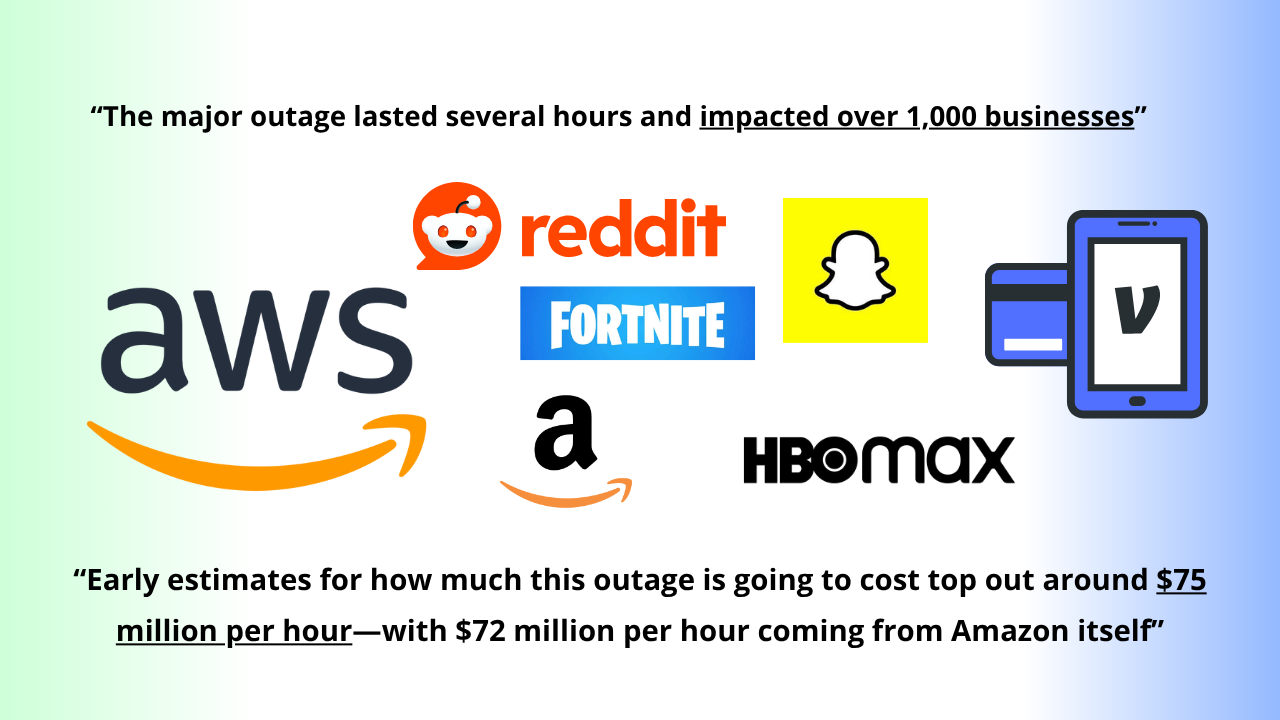When Amazon Web Services (AWS) went down on October 20, 2025, millions of businesses were reminded of a truth they’d rather ignore: the internet, and much of global commerce, now runs primarily through one behemoth company.
The outage, which lasted roughly fifteen hours, originated in AWS’s US-EAST-1 data center in Virginia and quickly spread worldwide. Apps like Snapchat, Venmo, DoorDash, and of course, Amazon’s own tools – Seller Central, Alexa, and Prime Video – went offline. By the time services were restored, over eight million outage reports had been logged on DownDetector.
For sellers, logistics providers, and anyone operating inside Amazon’s ecosystem, this outage wasn’t just a technical failure, but a strategic warning. The AWS outage showed how deeply dependent modern supply chains have become on Amazon’s infrastructure, not just for retail and fulfillment, but for the basic plumbing of digital commerce.
The Cost of One Company Controlling the Supply Chain
Over the past decade, Amazon has positioned itself as both the world’s largest marketplace and one of its most dominant infrastructure providers. Its retail arm controls product visibility and consumer access. Its logistics arm — through FBA, AWD, and MCF — manages storage, routing, and delivery. And its cloud division, AWS, hosts the very systems that power most of those operations.
When one of those layers fails, the rest follow. During last week’s outage, fulfillment appointments were delayed, seller dashboards were inaccessible, and order updates stalled. Even businesses that don’t sell on Amazon felt the impact because their e-commerce platforms, APIs, and software tools depend on AWS in some hidden way.
Our recent post on Amazon’s supply chain updates warned about this pattern and how a growing concentration of power makes sellers efficient when things work, but vulnerable when they don’t. The AWS outage proved just how fragile that model can be.
Why Sellers Need More Than Speed in Their Logistics
For years, Amazon has sold scale as security. Its global network, automation, and integrations promise convenience and cost efficiency — until one system goes down. When sellers rely on Amazon for manufacturing intake, inventory control, warehousing, and last-mile delivery, they give up something more valuable than money: independence.
The October outage showed how easily a single point of failure can freeze an entire supply chain. Even for companies that escaped downtime, it was a reminder that relying on Amazon for both technology and logistics means having no backup when the platform stalls.
The World Economic Forum’s Global Risks Report 2025 highlights “concentration of strategic technologies” as one of the biggest global threats. In logistics terms, that concentration already exists, and it’s growing faster than most sellers realize.
Building Independence and Control Into Your Supply Chain
True resilience doesn’t come from faster APIs or bigger warehouses; it comes from optionality. Sellers who diversify fulfillment, use independent 3PLs, and maintain flexibility in their shipping and storage models are better protected from systemwide shocks — whether it’s a port closure, a policy change, or an AWS outage.
Tactical Logistic Solutions was built on that philosophy. Our bi-coastal facilities, direct carrier relationships, and independent WMS keep operations running smoothly even when Amazon’s systems don’t. We integrate with Amazon, but we’re not owned by it.
The Takeaway for E-Commerce and Logistics Leaders
Outages like this are becoming more common, but the bigger risk isn’t downtime…it’s dependence. The more the industry centralizes under Amazon’s umbrella, the more every disruption, outage, or fee change ripples across global supply chains.
Control equals continuity. And continuity, not automation, is what keeps inventory moving, orders fulfilled, and customers happy when the cloud goes dark.
Want a supply chain that stays online when Amazon doesn’t?
Talk to our team about building a logistics strategy that’s fast, flexible, and independent.

